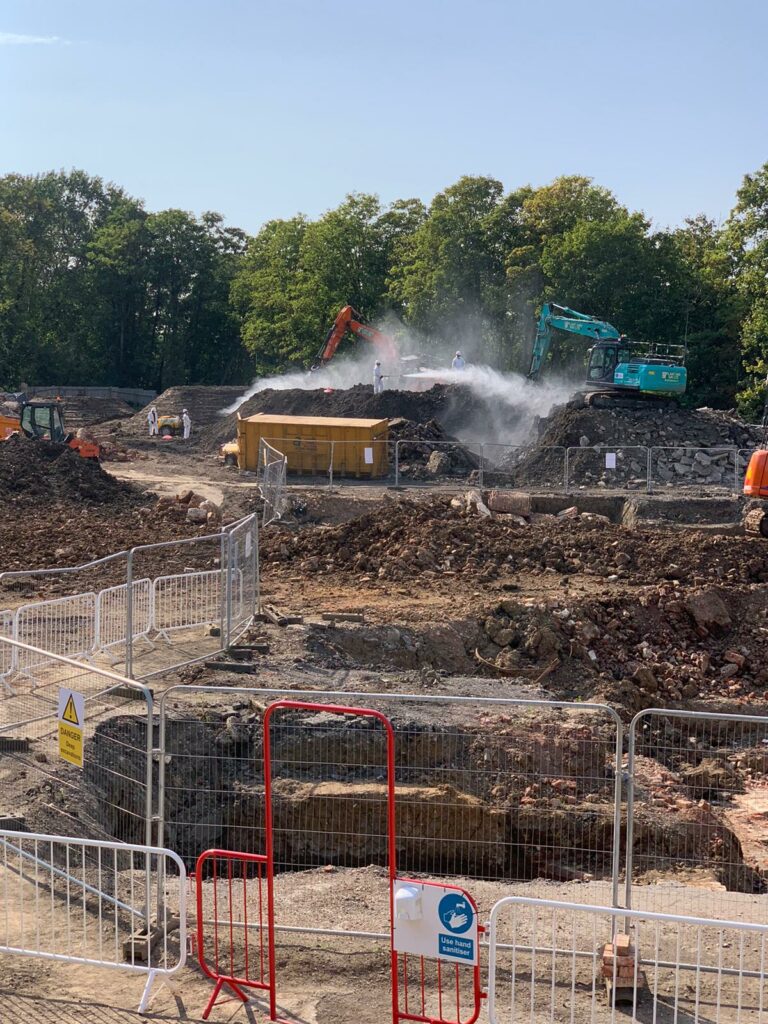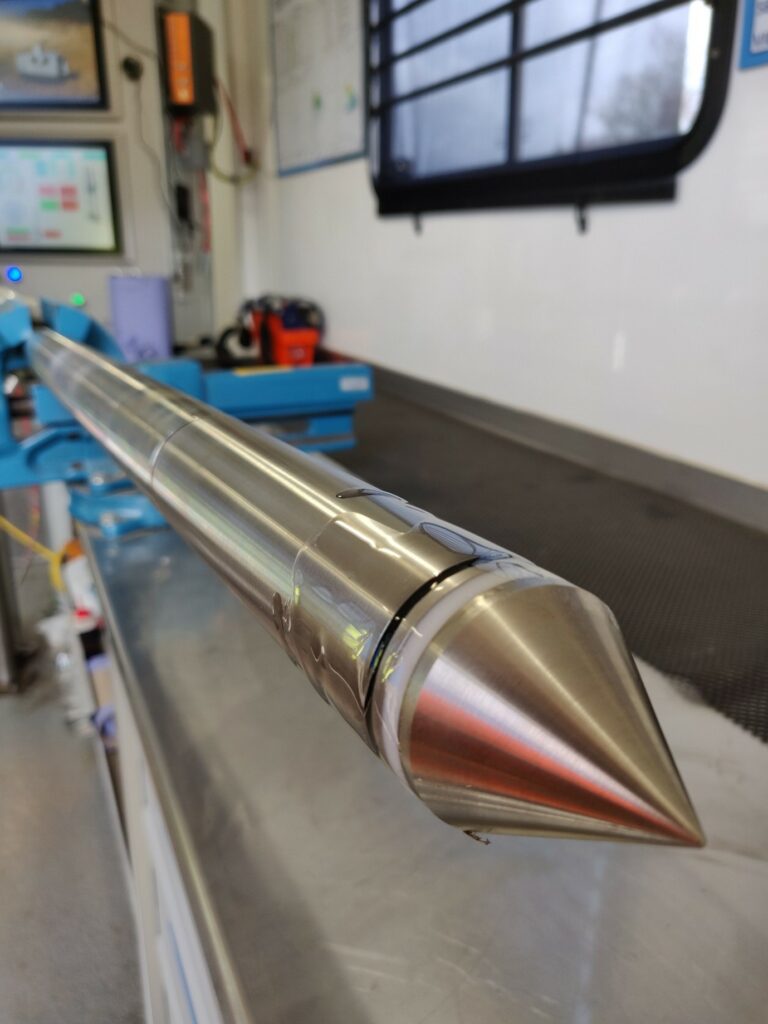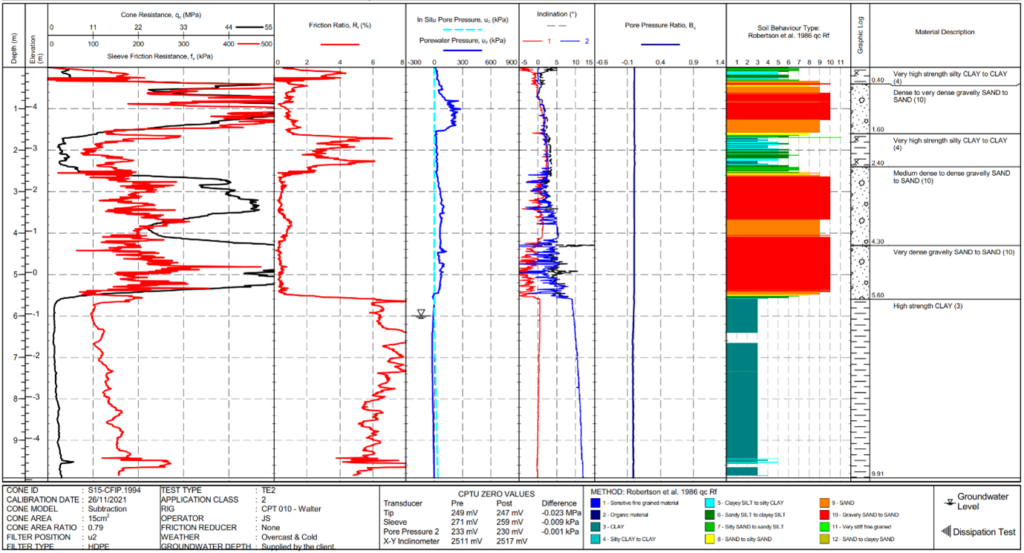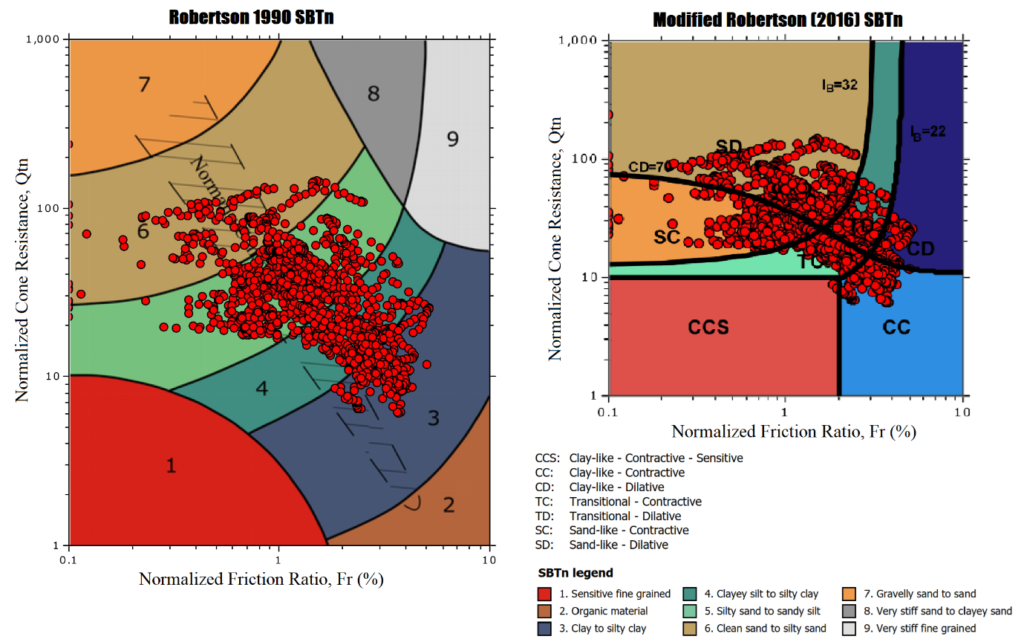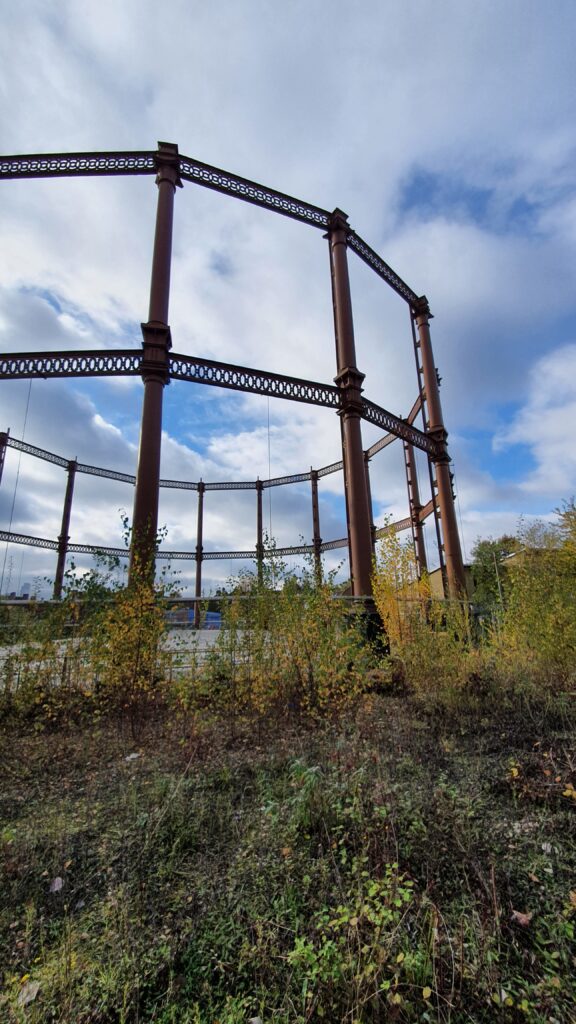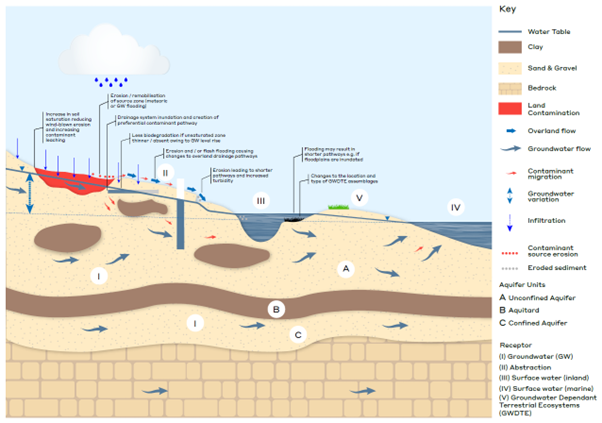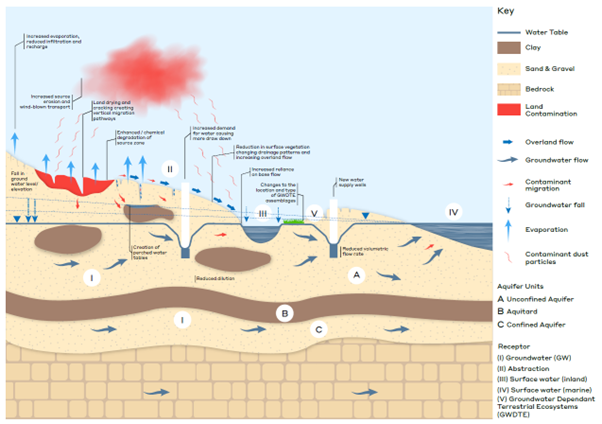This is an opinion piece by Peter Reading.
Disclaimer: The following article is an opinion piece and does not represent the views of the entire AGS.
As with many geotechnical investigative techniques, dynamic sampling has arrived via a circuitous route as an investigation tool to obtain samples primarily for contaminated land studies. The main precept leading to its development was to provide an investigation method that was relatively cheap and easy to operate whilst providing samples for inspection and testing. Ideally this would involve a method, which did not require heavy equipment and numerous tools and was easy to operate.
A number of variations have been developed in the design of sampling barrels and the method by which they may be driven, and it is perhaps not surprising that the terminology, which has been applied to the various methods, is somewhat confusing. One particular example is the term windowless now in common use where the sampling barrel used is a plain cylinder without the conventional rounded ended slots or “windows” running down the length of the barrel. However, this term is not used for all instances where dynamically driven barrels are devoid of windows, which only adds to the confusion.
This is further complicated by the term dynamic sampling being used to describe three distinctly different methods of driving the sampling barrels: the original method using a hand held jack hammer, the subsequent development of a light weight drop hammer rig on a tracked chassis and the more recent development as part of a rotary rig via a dual head system. These three methods deliver very different results, although in common use they are referred to with the same terminology, which primarily refers to the sampler and not the method of deployment. This discussion provides a suggested terminology, which removes the confusing term windowless and differentiates between the methods in common use.
It was during the early 1980s when window sampling appeared. The window sampler uses a hand held hydraulically operated jackhammer to drive tubes into the ground. This was an extension of the hydraulic breaker often see breaking concrete and surfacing such as road pavement. By the addition of a tube with a cutting edge at one end the hammer could be used to drive the tube into the ground and retrieve a sample of the soil to depths of a few metres.
The jackhammer equipped with tubes driven into the ground meant the process became quicker. However it is difficult to extract the soil from the tubes thus a slot was cut in the side of the lead tube to enable the soil to be seen and described. The tube was designed with a cutting edge at the bottom and a sloping interior at the top, which allows the soil to flow through the sampler. This sampler was difficult to use and was further developed to include long slots or windows to improve access to the sample. For the window sampler to progress the hole to depth the diameter of the sampler is progressively reduced every metre thus reducing the friction on the outer wall of the sampler and aiding recovery. Even so it is often necessary to use jacks to extract the tubes from the ground. There was also a limitation on the lithologies that could be successfully penetrated and sampled using the method.
The late 1980s into the 1990’s saw a significant change in the ground investigation industry with the demise of many of the household names of ground investigation practitioners. The result from this was many drillers became self-employed. Being self-employed the cost of a full cable tool set up was significant.
Windowless sampling came about following the development of the small track mounted rig able to drive a thick walled sample tube equipped with a liner, to moderate depths. These become commercially available around the mid to late 1990’s. These rigs seen as a more affordable method for the self-employed driller to put down holes to depths of up to 6m. (Although in some soils depths of 10m or more may be achieved) The rig, which generally weighs less than 1 tonne, can be readily moved on a trailer or transported in a long wheelbase van.
The arrival of this smaller much simpler, cleaner and cheaper rig to sample the ground was welcomed by those specifying investigations, whilst ignoring issues such as quality and representativeness of the samples recovered. The rig tooling is very different to that of the window sampler in that the tubes do not have the slot (window) in them, hence the somewhat nonsensical term windowless was used to describe them. As with the window sampler, they are reduced in diameter with depth to enable ease of extraction. In order to resolve the difficulty of removing the sample from the tube a plastic liner is used. The incorporation of the liner means that the body of the sampler becomes thicker and the area ratio becomes considerably higher, almost 115% for smaller diameter barrels. At 123mm diameter the area ratio is 50%. Such a high area ratio means the sample quality can never be considered better than a class 3 and is usually class 4 or 5 It is useful to note that the area ratio (Ar) is predominantly determined by the cross sectional area of the cutting shoe and not the sample tube itself. The sampler will only influence the Ar if it has a greater cross sectional area than the shoe. The degree of disturbance is also affected by the taper angle of the blade of the cutting shoe, which should be no more than 5 degrees for a class 1 sample system and is unrealistic for a system designed for all soil types.
During the early 2000s rotary drilling became a common method for sampling stiff clay. When deployed it would often be required to predrill using cable percussive rig to progress the borehole through superficial fine and coarse soils. Rig manufacturers, seeing the inefficiency of this two rig deployment, modified the rotary rig by providing a dual head arrangement whereby the superficial soils could be drilled using the same sample tooling as the earlier dynamic sampler rig. The borehole can therefore be progressed initially by dynamic sampling using a hydraulic percussive head and when at a suitable depth can be swopped to the rotary head to enable coring to take place. This was seen as a relatively simple addition since many rotary rigs were already equipped with both wire rope winches and a percussive hammer mechanism. The hydraulically operated hammer mechanism is able to deliver blows very rapidly. The more powerful rotary rig is able to dynamic sample to much greater depths than the smaller tracked machines, largely due to its ability to extract the sampler from greater depths. It is also able to handle a single diameter of tooling and sampler and can install and extract casing. In soft and firm soils the rig pull down can be used to push the sampler into the ground until the resistance is too great, at which point the hammer can be used. The extra power and ability to case the hole whilst drilling at a large diameter improves the ability to obtain a slightly higher quality sample. It would seem that to continue to refer to the method as windowless sampling is not helpful and a distinction needs to be made to differentiate the methods of use.
It is useful to look at what our current codes and standards provide on this subject.
BS 5930+A1 (2020) described three methods of deploying the windowless sampler:
1. Hand held “rigs“ commonly electric, hydraulic, pneumatic and petrol driven percussive hammers – all methods are hand held.
2. Feed frame mounted drop weight rigs
3. Feed frame percussive hammer type rigs, these rigs are hydraulically powered.
BS EN ISO 22475 part 1 (2022) Table 2 line 2 refers to windowless samplers as thick walled (OS-TK/W) driven dynamically and being with sampling category C[B] where OS-TK/W refers to open tube samplers Thick walled.
There are two relevant notes that are within table 2, line2:
- Note a) states that – if the sampling categories given in brackets are used in particularly favourable ground conditions – which should be explained in such cases – the higher quality indicated in the brackets can be achieved.
- Note b) states includes windowless samplers
Table 2, Line 7, however, refers solely to windowless sampling and states that the achievable sample category is D (C). This clearly conflicts with the information in line 2.
BS EN ISO 22475-1(2022) provides an indication of quality class for various methods of drilling. The footnote to Table H4, Tube Sample Quality Class Assessment, states that the classification is not intended for dynamic samples from windowless samplers within a plastic liner, and advises that these will always only be classed as disturbed samples.
It is clear that with an ad-hoc history of the various sampling types, terms have become confused. It is time to adopt clearer terminology. To do this the terminology should differentiate the method used to drive the sampler and then describe the sampler type and to remove the confusing term “windowless”.
The delivery of the sampling method uses either hand held (HH) equipment with a hydraulic hammer ; the drop weight (DW) method such as the Terrier rig or the hydraulically operated percussive hammer (HP) usually forming part of a rotary rig with a dual head. It should be noted that organisations must seriously consider the health implications for their operatives using hand held sampling due to the risk of HAVS.
There are basically two sample types the window sample (WS) a tube with a window /slot in the tube and the dynamic sample (DS) system using a sample barrel fitted with a plastic liner, both are thick walled sampling systems with area ratios considerably in excess of 15%.
Combining the sample system and the method of driving the barrels gives the following terminology:-
Hand Held Window Sample (HHWS) – referring to a hand held hydraulic hammer which is used to drive rods that connect to the sampler tube which has slots or “windows” cut in its side. The diameter is progressively reduced every metre in order to reduce friction and aid retrieval. The sample is of very poor quality from a geotechnical perspective, being highly disturbed and altered, and is considered to be of quality class 5.
Hand Held Dynamic Sample (HHDS) – refers to a hand held hydraulic hammer used to drive the dynamic sample tube assembly with an inner plastic liner, (although less commonly used , it is understood that this combination has been adopted in some situations).
Drop Weight Dynamic Sample (DWDS) – used when referring to a small tracked or wheeled machine with a short mast where the driving mechanism is a drop weight carried on a chain lift. The weight is dropped onto an anvil that connects to drives rods fitted onto the sample tube. Due to the limited energy from the rig, the sample tubes are reduced in size as the hole is progressed deeper which reduces the friction between the sampler and the sides of the boreholes. This limits the depth achievable and the sample diameter recovered is reduced with depth (along with the sample quality). The depth of penetration is limited to less than 10m depending on the soil type being sampled. The sample quality is poor and not better than Class 4, mainly due to the very high area ratio, which reaches about 115% when using 40mm diameter tubes.
Hydraulic Percussive Dynamic Sample (HPDS) – uses the dynamic sample (DS) system to drive sample tubes by blows from a hydraulic percussive (HP) hammer which is part of a dual head system in conjunction with rotary drilling. Because the rig is more powerful, it is able to drive the sampler with the more powerful and rapid application of blows from the hydraulic percussive hammer. It is also capable of pushing the sampler into soft to firm soil, a method considered significantly better than driving. The added power of the rig also enables the sampler to be used at a single size usually either 100mm or 123mm diameter. The 123mm diameter sampler enables continuation of the borehole, below the HPDS section using wireline rotary drilling equipment. Casings may also be installed to ensure borehole stability whilst dynamic sampling. The area ratio for this method is typically around 47%, but it does remain constant as the same tube diameter is used for the full depth sampled. At best the method can only be considered to provide a Class 3 sample.
| Method type | Hand Held Window Sampling
(HHWS) |
Drop Weight Dynamic sampling or Hand Held Dynamic Sampling
(DWDS)/(HHDS) |
Hydraulic Percussive Dynamic Sampling (HPDS) |
| Sample diameter | 100mm to 40mm Requires sample diameter to be reduced with depth; | 100mm to 40mm Requires sample diameter to be reduced with depth; | Usually either 100mm or 123mm to full depth |
| Depth of sampling | 5 to 6m | Between 5 to 10m depending on strata, less using hand held | 15m but could progress deeper |
| Casing option | No | Possible for 1 to2m | Possible to full depth |
| Sample quality class | 5 | 4 at best | 3 at best |
| Instrumentation | Only if hole remains stable and diameter is appropriate | Only if hole remains stable and diameter is appropriate | Yes |
| Approximate area ratio | Up to 100% | 47% at 100mm increasing to 115% at 46mm diameter | 47% at 100mm diameter |
Table 1 Comparison of dynamic sampling methods
The quality class of the sample obtained by any particular method is primarily determined by the profile of the sample assembly, typically thin walled sample tubes with low angle tapers providing better quality samples. There is some evidence that the method of inserting the sampler will also affect the sample quality and it is recognised that a pushing the sampler barrel is always preferable to a dynamically driven sampler barrel.
It should be noted that currently there is no published evidence, confirming a quality difference between DWDS, and HPDS sampled materials. However, in the authors experience the faster almost continuous driving from HPDS appears result in the edge disturbance to the sample, being considerably reduced. This is visually apparent from the “turning down” of the soil fabric at the sample edges, due to the forces required to overcome friction between the liner and the sample, which is much reduced. In any event, the two techniques are appreciably different and thus a descriptor that makes this differentiation is considered justified.





